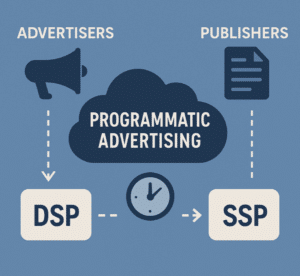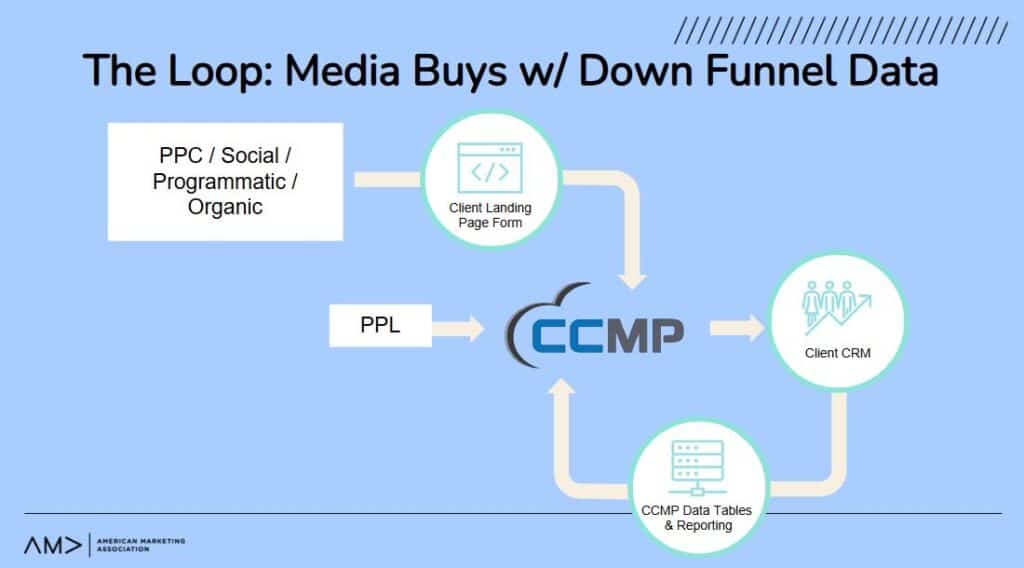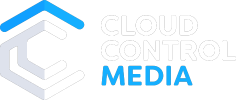Once considered a salvation and growth engine for colleges and universities across the country, online program managers (OPM) have fallen out of favor and are under increased regulatory scrutiny. Particularly as some of the biggest players in the space show signs of their demise, warnings abound that it may be time to disengage from your provider before their abrupt exit wreaks havoc at your institution. But if you are ready to take the management of your online programs in-house, it’s likely not just the programs themselves that you will need to manage. Because OPMs were encouraged to “bundle” services, your team not only needs to build and develop programs and course materials; it may also need to consider a multitude of other services including recruitment, nurturing, enrollment, lead management, marketing, and data analytics. Are you ready? Find out how to make a seamless transition away from your OPM.
The Rise of Higher Ed OPMs
In the 2000s, with declining enrollments, tightened budgets, and dwindling federal and state subsidies, institutions of higher education were desperate to find new students. They needed to expand their offerings, protect their brand, and bring in tuition and financial aid dollars—fast. For many schools, online programs were a panacea. Tiny New Hampshire College was transformed into a behemoth as Southern New Hampshire University with more than 170,000 students thanks to online programs. But unlike SNHU, most schools did not have the foresight, staff, infrastructure, or expertise to build out full-scale online programs on their own. They needed a partner willing to do some heavy lifting, especially from a financial perspective.
“It made sense at the time because colleges and universities didn’t have the technology to run, service, proctor, instruct and market online programs,” says Christopher Roberts, General Manager of CloudControlMedia. “OPMs brought in new students through what we now know as lead generation and the schools just did not know how to do this. OPMs also bore all the upfront costs so it seemed like a good arrangement.”

For stressed-out and risk-adverse school administrators, OPMs offered the fastest and easiest way into the online market. OPMs were the easy answer to a complex question. Because OPMs assumed the risk, provided upfront capital, and had the mechanisms in place to bring new programs to market, they allowed schools to quickly build and scale online programs. Schools saw the opportunity to bring their brand and mission to a larger audience and increase revenue without adding staff or making a financial investment.
While institutions often enter public-private partnerships with vendors for services (e.g., food, custodial, IT services), OPM arrangements are distinct in that they are central to the university primary function of education. There has been much recent conversation about whether an outside, for-profit agency should run what’s core to the nonprofit higher education business model. Moral dilemma aside, the popularity of online program managers soared. OPMs grew by more than 130 percent from 2011 to 2015. And in 2016, up to 80 percent of the institutions delivering online programs relied on OPMs.
Online Program Manager Contracts
For all their perceived benefits, OPMs came at a steep price. Although schools weren’t paying upfront costs, many agreed to revenue sharing that could be wildly expensive. Some payment structures allowed for the OPM to pocket up to 94 percent of tuition and fees. Contract features also were decidedly structured to the advantage of the OPM and not the institution. For example, some included indefinite clauses that had no set termination date, and many were long-term with auto renew clauses. Even contracts allowing termination often required schools to give notification far in advance of the stop date, some as long as a year before the desired end of the contract. And if a school canceled early merely to switch to a new OPM, it might be held to a quasi-noncompete clause whereby it would be prohibited from signing on with another provider until after the original termination date. There were even contracts that gave OPMs a “right of first refusal” so institutions couldn’t launch programs that might compete with any of the programs originally developed by the OPM. And contracts were not consistent across clients. An OPM offering services to several university partners would often have very different terms, conditions, and payment structures with each of the schools.
Another layer to the OPM contract imbroglio is the tendency toward expansion. Let’s say you sign with an OPM to deliver an online master’s program in data science and analytics. It goes well so you add an MBA, and then later maybe a master’s in nursing program. All have been set up with different contracts, having different terms and dates. Pulling away from a single contract can be difficult, but disengaging from multiple contracts can take years.
“Really as the contracts wore on, universities began to realize they’d gotten into a long-term lopsided deal,” says Chris. “And then when COVID hit, that was a genesis for a lot of these schools to become more self-sufficient and embrace online higher education.”
OPMs On Rapid Decline
Despite the hurdles of contract extrication, schools across the country are finding ways to flee. And giants in the sector are feeling the impact. Pearson sold its OPM business in 2023, Wiley divested from its University Services, and 2U is barely hanging on.
But colleges and universities didn’t just wake up one morning and decide to reexamine their contracts. There were plenty of warning signs that the landscape had changed, from OPM consolidation to shifting regulatory winds that could cause a tornado of repercussions. Those same institutional leaders who didn’t like the risk of going online alone are now afraid of what new guidelines from the Department of Education might mean for third-party servicers like OPMs.
New government regulations and oversight expected in 2024 could dramatically change how and whether universities and online program managers continue to work with one another. Many of the features that made OPMS the darlings of venture capital and private equity, such as revenue sharing and near invisible audit trails, are bringing about increased scrutiny. Even the bundled service exception that was meant to prevent colleges from paying OPMs based on how many students they enrolled, fell far short of its mark. Now considered a loophole that allowed OPMs to flourish—and gain even more of a stranglehold on the institutions they served—it could be obliterated under new guidelines.

Breaking Up with Your Online Program Manager
Before you cut ties with your OPM, look at your existing contracts. Where do you stand and how can you move forward without disrupting the online foundation you’ve already built? Especially for bundled services, it’s time to think a la carte. You don’t need to rely on your OPM for multiple services such as marketing, recruitment, lead-nurturing, enrollment, program design and management, academic support, and student success and retention. What can you take in-house and where will you need a new partner?
7 Benefits of Unbundling Higher Ed OPM Services
Severing your relationship with your OPM and figuring out how to handle all the tasks they once did may sound daunting. It can be. But for many institutions, the decision has become easier as the pros outweigh the cons. Among the benefits of unbundling:
1. Save Money
Whatever your arrangement with your online program manager, wouldn’t you rather keep your tuition dollars to yourself? Unbundling also allows you to reevaluate the services you actually need without the add-ons that helped OPMs evade the spirit of the bundling exception.
2. Protect Your Brand
Unbundling from an OPM gives you back control of your institutional brand. Because OPMs often handled the recruitment process, some companies—and the schools they represent—have been accused of aggressive tactics to enroll students.
3. Embrace Transparency
Among the criticisms of online program managers is their opacity. Those long-term, difficult to get out of contracts are only part of the story. Many students voiced concern about recruitment practices that left them unaware that they were speaking to a second-tiered representative of the college and not people from the actual college. Unbundling allows you to be your authentic self while insisting that other service providers do the same.
4. Tap Internal Resources
While the pandemic may have given OPMs a big boost when desperate colleges flocked to them for an easy fix to the online tidal wave, many other schools figured it out. Whether they wanted to or not, instructional designers quickly got courses and programs online. If your team learned how to design and run online programs, now’s the time to give them the power and autonomy to do so.
5. Customize to Your Needs
Although online program managers often touted the customization they offered clients, who knows your institution and programs better than you? Especially in saturated programs like online MBAs, your differentiators are what attract students to your school instead of a competitor’s. Unbundling lets you decide how you build and market programs based on your values and goals.
6. Adapt to the Market
Once you pull away from the bundled services of an OPM, you’re apt to discover how much more quickly you can adapt to the changing needs of your students and your institution. Whether it’s to bring a new program online, modify existing curriculum, or discontinue a program, you can quickly pivot when you need to.
7. Improve Efficiencies
Unbundling allows you to take a more agile and streamlined approach to online program delivery. You internalize the functions that make the most sense for your university, while tapping external partners for their experience and expertise. Choose the service provider that specializes in what you need. And when you pay per service, you eliminate costly extras.
How to Handle the OPM Breakup
Many schools are ending their contracts with their OPMs today because they fear their partner may not be here tomorrow. The transition is likely to take longer than you hope, so the earlier you begin, the less rocky the road will be. According to Chris, there are several factors to consider before you make the move.
“Look at the length of the contract and how well you can proctor the courses on your own,” recommends Chris. “What can you do and where would a partner be a benefit? In the wake of OPMs, many schools have warmed up to trade school marketing techniques like lead generation, speed-to-lead, and target digital marketing. But even though they see the benefits, they need help with the performance-based marketing piece for new student acquisition and nurturing. That’s where a digital marketing partner makes sense.”
If you’re ready to move away from your online program manager, follow these 5 steps to break up with your OPM:
1. Review Your Contracts
Before you can break a contract, you need to revisit its terms and conditions. And the more contracts you have, the more complicated it can be to terminate them. But if you’re approaching an auto renew date, act quickly to notify your OPM before you miss the opportunity.
Another reason to review your contracts is to have a clear understanding of exactly what services your OPM currently provides. Most, if not all, of those services will need to be provided by another vendor or internal department.
2. Determine Who Will Control Unbundled Services
Determine the most important services you will manage in-house. For the others, research which partners might possess the appropriate knowledge and skills to improve efficiency and effectiveness. Which of these will you handle, and which will you contract out:
- Market Research
- Curriculum Development
- Instructional Design
- Course Presentation
- Program Admissions
- Academic Services
- Student Success
- CRM Administration
- Enrollment Marketing
- Student Recruitment
- Lead Management
- Lead Nurturing
- Data Analytics
- Website Development
3. Tap Your In-House Resources
Once you decide which functions your team will perform, provide them with the resources and support they will need to be successful. Look for gaps in skills and personnel and either fill them or reconsider what you can handle.
4. Develop Vendor Agreements
As you transfer contractual services from one provider to others, make sure to put in place contracts that are fair and clear, with well-defined terms, conditions, start and end dates. Create policies, processes, and communication channels on how to work with multiple vendors and set clear and realistic expectations with each provider.
5. Demand Analytics
Whether it’s a nurturing or digital media campaign, a landing page or site development, make sure to examine the results through comprehensive analytics. If you can’t determine how and when a lead becomes a student, there’s a problem. If you can’t connect your early actions to their down-funnel results, you won’t be able to determine a reliable lead flow, your cost-per-acquisition, or your return on investment.
Are you ready to extricate yourself from your OPM and unbundle the services they provide? CloudControlMedia can take on all your digital marketing needs. Contact us today for an exploratory call.
Linda Emma heads up content at CloudControlMedia, assists with partnership development, and still works in the higher education space.





















